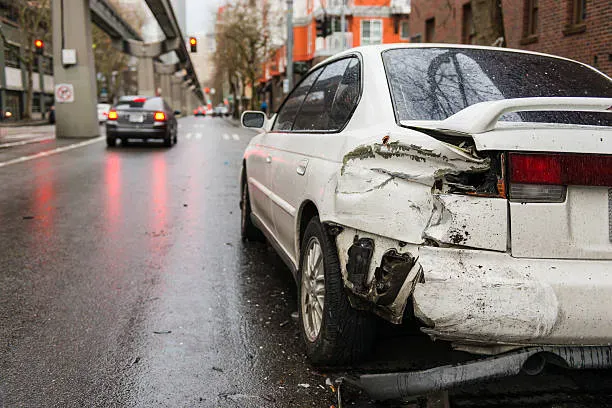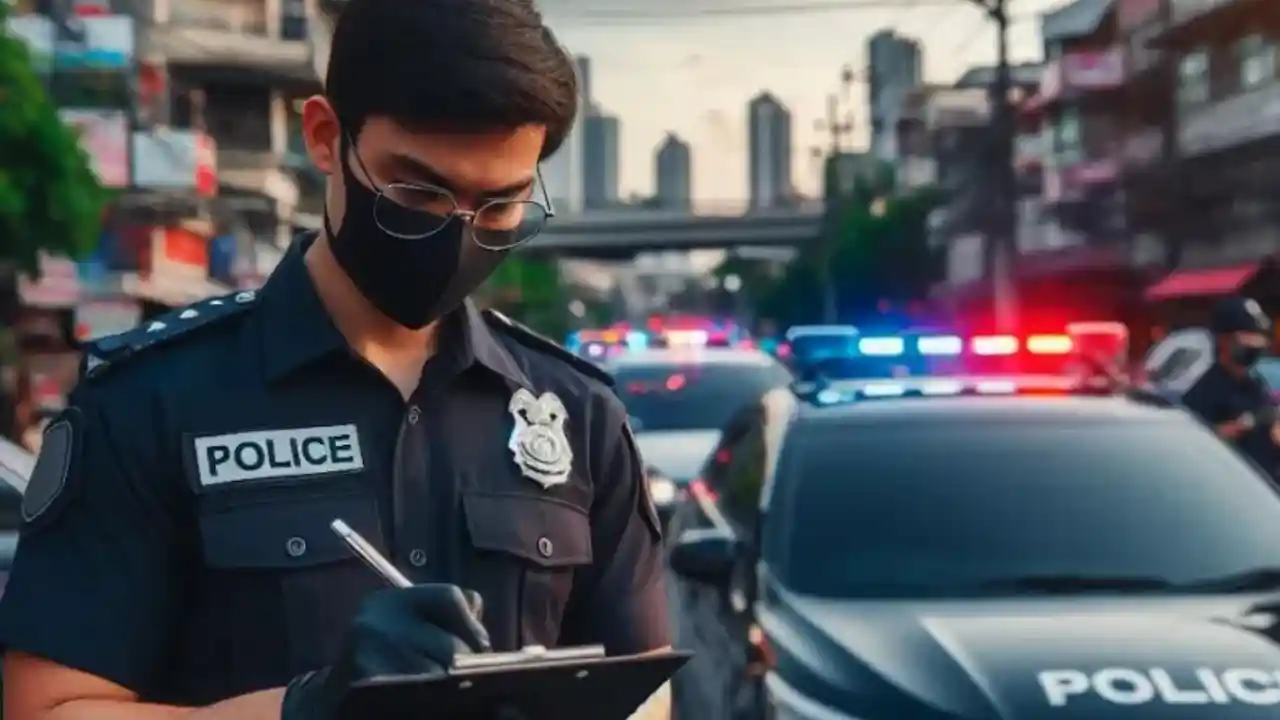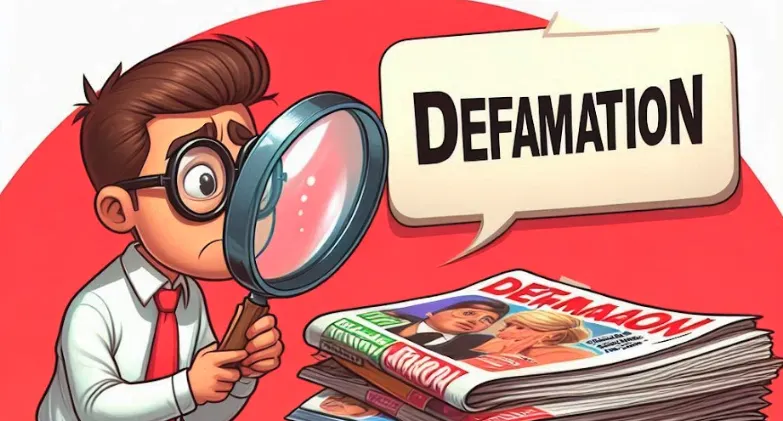The Commissions For Protection Of Child Rights Act, 2005
advertisement
The Commissions for the Protection of Child Rights Act, 2005, made by the Indian Parliament, sets up two groups to protect children’s rights. This law is meant to follow the promises India made in an international agreement about children’s rights. More and more people are now aware that children have many rights, like the right to good food, the rights of girl child, and the freedom to express their opinions. Because of this, the Commission will need to teach both children and adults about these rights and make sure they are followed.
Introduction.
Children are very important for any country. When they are given the right environment, they grow up to be useful and responsible adults. Taking good care of children helps the whole society grow. India has the highest population of children globally. The Constitution of India gives equal rights to all people, including children, no matter their gender, age, caste, or wealth. Children's rights are divided into four main types:
- Right to Survival,
- Right to Protection,
- Right to Development, and
- Right to Participation
To support these rights, India has made several important laws, like the Commissions for Protection of Child Rights Act, 2005, the Juvenile Justice Act, 2015, the POCSO Act, 2012, and the Right of Children to Free and Compulsory Education Act, 2009. These laws help make sure children are well cared for and protected.
advertisement
When the Commissions for the Protection of Child Rights Act, 2005, was introduced, it started a new effort by the government to help and protect children’s rights. It created a National Commission for Protection of Child Rights (NCPCR) and State Commissions for Protection of Child Rights (SCPCRs). These groups make sure that all laws, policies, and programs follow the rules about children’s rights in the Indian Constitution and the UN Convention on the Rights of the Child.
Since the National Commission for Protection of Child Rights (NCPCR) was set up in 2007, there are now 34 state commissions across India. These groups look into cases where children’s rights are violated and work to protect and promote children’s rights, as required by the laws.
Who is a Child?
According to the Convention on the Rights of the Child from 1989, a ‘child’ is anyone under eighteen years old, unless the law says they are an adult before that age. So, international rules consider people under eighteen as children.
Different Indian laws define ‘child’ and ‘minor’ in various ways. Here’s how they are defined in each law:
advertisement
- According to Section 2(ii) of The Child and Adolescent Labour (Prohibition and Regulation) Act, 1986, a ‘child’ is anyone who is not yet 14 years old. This law is designed to stop children from working and applies to anyone under 14.
- According to Section 2(c) of The Plantations Labour Act, 1951, a ‘child’ is anyone who is not yet 15 years old. This law is meant to help people working in plantations.
- According to Section 2(c) of The Motor Transport Workers Act, 1961, which sets rules for working conditions in motor transport, defines a ‘child’ as anyone under 15 years old.
- According to Section 2(b) of The Beedi and Cigar Workers (Conditions of Employment) Act, 1966, a ‘child’ is anyone who is not yet 14 years old. This law is meant to support workers in beedi and cigar manufacturing.
- The Prohibition of Child Marriage Act, 2006 under section 2(a) defines a ‘child’ as a male under 21 years old or a female under 18 years old. The main goal of this law is to stop child marriages.
- According to the section 2(12) The Juvenile Justice (Care and Protection of Children) Act, 2015, a ‘child’ is anyone under 18 years old. This law helps with the care and development of young people, and it applies to everyone who is not yet 18.
- According to Section 2(d) of The Protection of Children from Sexual Offences Act, 2012, a ‘child’ is anyone under 18 years old. This law aims to safeguard children from sexual abuse and harassment.
advertisement
Commission’s Aims and Objectives.
The Commission's job is based on what ‘child rights’ means. When you look at how ‘child rights’ is defined in the law, it seems like the Commission has a big job that can get even bigger. This is because the definition of ‘child rights’ includes many things and can cover new rights that may come up in the future.
The Commission can look into cases where child rights are violated by the government or by people (Individuals). So, it seems the Commission has a wide and important role to follow the Paris Principles.
Structure of the Commission, Qualifications, and Appointment Terms.
According to section 3 and section 17 of The Commissions for the Protection of Child Rights Act, 2005,The Commission, both at the National and State levels, will consist of one Chairperson and six Members. At least two of the Members must be women. The Chairperson should be a prominent individual with significant contributions to child welfare. The Members should be respected and experienced professionals from six different fields:
- Education
- Child healthcare, welfare, or development
- Juvenile justice or care for neglected, marginalized, or disabled children
- Ending child labor or helping children in distress
- Child psychology or sociology and
- Laws about children.
advertisement
The Chairperson and Members serve for three years and can be reappointed for one more term. They must leave their positions when they turn 65 and 60 years old, respectively.
At the National Commission for Protection of Child Rights, the Chairperson has the same status as a Secretary in the Government of India. The Members have the same status as an Additional Secretary in the Government of India. For the State Commission for Protection of Child Rights, the status of Chairpersons and Members is different in each State and Union Territory.
The State Commission for Protection of Child Rights across the country is working at different levels. The State Government or Union Territory administration must ensure that the State Commission for Protection of Child Rights has well-located offices that are easily accessible by public transport and accommodating to individuals with disabilities.
They should also have additional desks if necessary. Furthermore, essential resources such as transportation, phones, and computers must be provided.
Powers Granted to the Commission.
To look into important matters under Section 13(1)(j) of the Commission for Protection of Child Rights Act 2005, the Commissions for the Protection of Child Rights have the same powers as a Civil Court under Section 14(1). This helps them handle cases under the Civil Procedure Code, 1908. These powers allow the Commissions to notice and investigate serious violations of child rights on their own.
The Hon’ble Supreme Court has determined that the National Commission for Protection of Child Rights and the State Commission for Protection of Child Rights have the authority to assist with investigations or inquiries, but they do not function as actual Civil Courts.
advertisement
This means they cannot grant temporary or permanent orders like a Civil Court can. Only a real Court can do that. The National Commission for Protection of Child Rights or State Commission for Protection of Child Rights powers are limited to the five specific ones listed in Section 14(1)(a) to (e). They cannot use any other Civil Court powers.
Suo motu notice/cognizance by the Commission:
“Suo moto” is a Latin term that means “on its own.” In legal terms, it means that a court can start a case by itself, without anyone asking it to. “Cognizance” means “notice” or “awareness.” When we say a court takes cognizance of an offence, it means the court is noticing or becoming aware of it. The court must first notice the offence before it can start a trial. Powers under Section 14(1) of the Commission for Protection of Child Rights Act 2005, allows National Commission for Protection of Child Rights or State Commission for Protection of Child Rights to investigate complaints and notice issues on their own related to:
- Deprivation and violation of child rights;
- Non-implementation of laws providing for protection and development of children
- Non-compliance of policy decisions, guidelines or instructions aimed at mitigating hardships to and ensuring welfare of the children and to provide relief to such children, or take up such issues arising out of such matters with appropriate authorities.
advertisement
Power to Require Attendance and Question Persons on Oath:
Similar to the powers of a Civil Court, Commissions for the Protection of Child Rights can call and require someone to come if the Commission thinks it is necessary for an investigation. However, not every case needs a summons first. This power should be used wisely and fairly because ignoring a summons can have legal consequences. The Complaints Division of the Commission should carefully review the case and then recommend issuing a summons to the Chairperson or Member Secretary in charge.
Requirements for the Issuance of Summons:
- The Commission for the Protection of Child Rights can send summons to people and representatives of institutions who live in its area.
- The summons should be properly addressed and sent by registered mail with prepaid postage so that a receipt of delivery is confirmed.
- The summons should clearly state the time and date the person must be present. It should also say whether they need to come to give evidence, bring a document, or both. If they need to bring a document, the summons should specify which document.
- The person summoned should be given at least 15 days' notice. For urgent or serious matters, a shorter notice period may be enough.
- If the summons is not received or the person cannot be found, a copy should be attached to the front door or another visible part of their house or office.
advertisement
Power to Order the Discovery of Documents and Request Copies of Public Records from Any Court or Office:
Under Section 14(1)(b) of the Commission for Protection of Child Rights Act 2005, if the Commission believes someone has a document related to a case, it can order them to provide it. It can also request a public record from any government officer or court under Section 14(1)(d).
However, the Commission should first send letters asking for the needed information from the person or authority involved. If they do not respond, then the Commission can use its powers under Section 14(1)(b) and (d). The person should be given at least 15 days' notice to provide the documents to the Commission.
Power to Accept Evidence Presented in Affidavit Form:
Under Section 14(1)(c), if the Commission thinks it is quicker, it can ask a person to provide evidence in a written statement (affidavit) instead of appearing in person. The affidavit should only include facts that the person knows directly. Usually, parties have the right to question witnesses during hearings before the Commission.
advertisement
Power to Issue Commissions for the Assessment of Witnesses or Documents:
According to the Code of Civil Procedure - Schedule 1, Order XXVI, the Commission can appoint one or more Commissioners to conduct a local inquiry if needed. This is to get a better understanding of the case, speed up the process, or for any other reasons the Commission finds appropriate.
The Code of Civil Procedure gives the following powers to a Commission, unless the appointment order says otherwise:
- Examine the parties themselves and any witness whom they or any of them may produce and any other person whom the Commissioner/s thinks proper to call upon to give evidence in the matter referred to him.
- Request and examine documents and other items related to the investigation.
- Enter any land or building mentioned in the order at a reasonable time.
Power to Submit a Case for Magistrate Review:
Section 14(2) of the Commissions For Protection Of Child Rights Act allows the Commission to send a case to a Magistrate under Section 346 of the Code of Criminal Procedure, 1973. The Commission can do this if a person fails to provide documents, refuses to take an oath, or refuses to answer questions.
Functions of the Commission.
Section 13 of The Commissions for Protection of Child Rights Act, 2005 outlines the functions of the Commission. These functions are further detailed under Rule 17 of the National Commission for Protection of Child Rights (NCPCR) Rules, 2006;
advertisement
- Evaluate Protections: Assess and analyze the safeguards provided by current laws for children's rights and recommend measures to ensure their effective implementation.
- Annual Reporting: Report to the Central Government annually on the effectiveness of these protections, as well as at other times deemed necessary by the Commission.
- Investigate Violations: Conduct investigations into violations of children's rights and advocate for legal action in such cases.
- Identify Barriers: Examine all factors that hinder children from exercising their rights, including terrorism, communal violence, riots, natural disasters, domestic violence, HIV/AIDS, trafficking, abuse, torture, exploitation, pornography, and prostitution. Propose suitable solutions to address these issues.
- Support Vulnerable Children: Investigate and recommend actions for distressed children, marginalized and impoverished youth, children in conflict with the law, juveniles, unaccompanied children, and children of incarcerated parents who require special care and protection.
- Review Policies: Assess existing policies, programs, and activities related to children's rights, along with relevant treaties and international agreements. Make recommendations for their effective implementation in the best interests of children.
- Promote Awareness: Raise awareness of child rights throughout society and enhance understanding of the protections available for these rights through publications, media outreach, seminars, and other accessible methods.
- Additional Functions: Carry out any other functions deemed necessary for the promotion of children's rights and manage related matters as required.

advertisement
How to Report Violations of Children's Rights to the National Commission for Protection of Child Rights.
Investigating claims of child rights violations is a key task for the Commission. The Commission also examines severe cases of abuse and conditions that prevent children from enjoying their rights.
- E-Baal Nidan - Online Complaint Management System: The E-Baal Nidan online complaint system, created by the Commission, is specifically for reporting concerns about child rights violations. Anyone or any group can file a complaint online for free.
- Complaints can also be made in person at the Commission's office, by phone, by letter, or by email. As each state has its own State Commission, it's important to find the address or contact details for the Commission in the relevant state before making a complaint. This can easily be done by a search on the internet as State Commission for Protection of Child Rights with your State's name. For instance: State Commission for Protection of Child Rights Karnataka.
Frequently Asked Questions (FAQs):
advertisement
1. What is Child Right?
All Human rights of persons below the age 18 years are known as Child Rights.
2. What is the primary objective of The Commissions for Protection of Child Rights Act, 2005?
The Act aims to establish national and state-level commissions for the protection of children's rights and to ensure the implementation of laws and policies related to child welfare. Its primary objective is to safeguard and promote the rights and interests of children, including their right to education, protection from abuse, and access to health services.
3. How are the National Commission for Protection of Child Rights (NCPCR) and State Commissions for Protection of Child Rights established under this Act?
The Act mandates the establishment of a National Commission for Protection of Child Rights at the central level and State Commissions in each state and Union Territory. The National Commission for Protection of Child Rights (NCPCR) is constituted by the central government, while State Commissions are set up by respective state governments. Both commissions are empowered to monitor and ensure the effective implementation of child rights.
4. How does the Act ensure accountability and transparency in the functioning of the commissions?
The Act stipulates that the commissions must submit annual reports to the central or state governments, detailing their activities, findings, and recommendations. These reports are made public to ensure transparency and accountability. Additionally, the commissions are subject to judicial review, which provides a mechanism for challenging their decisions if necessary.
5. Are there any special provisions for addressing child rights issues in remote or underserved areas?
Yes, the Act emphasizes the need for special measures to address the needs of children in remote and underserved areas. This includes appointing officers or setting up mechanisms to ensure that complaints from these areas are heard and addressed effectively. The commissions may also collaborate with local NGOs and community organizations to extend their reach.
advertisement
6. What role do state governments play in the implementation of the Act?
State governments are responsible for establishing and supporting State Commissions for Protection of Child Rights. They must ensure that these commissions have the necessary resources and authority to carry out their functions. Additionally, state governments are expected to implement and enforce child protection laws and policies effectively and to cooperate with the NCPCR in addressing national-level issues.
7. How does the Act align with international conventions on child rights?
The Act is designed to align with international conventions, such as the United Nations Convention on the Rights of the Child (CRC), which India has ratified. It incorporates principles and provisions from these international frameworks into domestic law, ensuring that national child protection measures are consistent with global standards.
8. What is the process followed by the commissions after receiving a complaint?
After receiving a complaint, the commission first acknowledges its receipt and may request additional information if needed to fully understand the issue. They then conduct a preliminary inquiry to assess the complaint’s validity and urgency.
If the complaint is deemed valid, the commission proceeds with a detailed investigation, which involves gathering evidence, interviewing witnesses, and consulting with relevant authorities. Based on the investigation’s findings, the commission makes recommendations for action or intervention and follows up to ensure these recommendations are implemented. In certain cases, the commission may also initiate legal proceedings or refer the matter to appropriate authorities for further action, depending on the complaint’s nature and severity.
advertisement
References:
- National Commission for Protection of Child Rights
- The Commissions For Protection Of Child Rights Act, 2005
- The Juvenile Justice (Care and Protection of Children) Act, 2015
- The Protection of Children from Sexual Offences Act, 2012
- The Right of Children to Free and Compulsory Education Act, 2009
- Convention on the Rights of the Child
- Section 2(ii) of The Child and Adolescent Labour (Prohibition and Regulation) Act, 1986
- Section 2(c) of The Plantations Labour Act, 1951
- Section 2(b) of The Beedi and Cigar Workers (Conditions of Employment) Act, 1966
- Section 2(c) of The Motor Transport Workers Act, 1961
advertisement
- Section 2(a) of The Prohibition of Child Marriage Act, 2006
- Section 2(12) The Juvenile Justice (Care and Protection of Children) Act, 2015
- Section 2(d) The Protection of Children From Sexual Offences Act, 2012
- Paris Principles
- Rule 17 of the National Commission for Protection of Child Rights (NCPCR) Rules, 2006
- Section 346 of the Code of Criminal Procedure, 1973
- The Code of Civil Procedure - Schedule 1, Order XXVI
- E-Baal Nidan

Written by Ruthvik Nayaka
Ruthvik Nayaka is a final year law student, his interests lie in areas including, but not limited to, Corporate Law and taxation law. He is also the EN-ROADS Climate Ambassador. He facilitates climate-workshops, climate action simulation games and group meetings.
advertisement
Further Reading
advertisement






